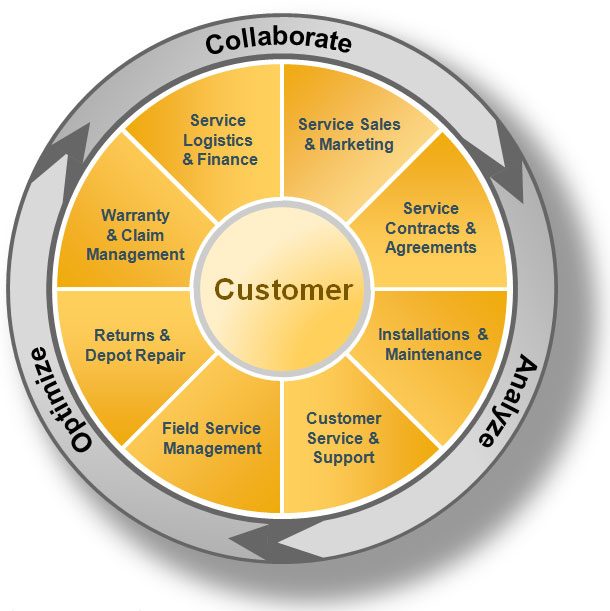When we left off in Part One of this series, we explored the declining ability of businesses to sell hardware and examined how the technology sector had changed in recent years to incorporate more services into its offerings. While hardware sales in the technology sector still offers an opportunity to establish brand recognition and generate outsized top line revenue, the commoditization of most technical devices mean margins will be low and profits light if your business is focused primarily on hardware sales.
So where do you go from here? Virtual services.

Yes, the word “solution” has become commonplace in technology sales in the last few years. In some cases, you might even see it used as a verb (“solutioning”)! But what does that really mean? A “solution” is a customized offering of services, with or without hardware, that address the customer’s specific technology needs. For example, instead of selling your client a rack of blade servers (commoditized hardware), you might sell the servers along with installation and configuration services, an ongoing support agreement, and a buyback program in three years when it comes time to refresh the server hardware again. That is a “solution.”
Virtual service sales bring about a new complexity that can be both an advantage and disadvantage.
For example…
ADVANTAGE: Since solutions are customized to the customer’s specific needs, it is unlikely that your competitors are offering the exact same thing you are. As a result, your offering can stand on its own two feet, and you are uncoupled from competing on price alone.
DISADVANTAGE: Since solutions are customized to the customer’s specific needs, planning them in detail can be more time consuming and resource intensive then simply offering the customer hardware for purchase. The large-scale virtual service sales cycle can be substantially longer than a basic hardware sale.
ADVANTAGE: Integrating services into your offering means that the customer’s interaction with you won’t end when the hardware is delivered as it would in a conventional order. As a result, you should have the opportunity to build a real, long-term relationship with the customer.
DISADVANTAGE: The margin of error when selling services can be very thin. Using the example above, what would be the result if, two years into a three year service agreement, your team failed to monitor a server and it was irreparably damaged? What would the cost be to your reputation with the customer? What would be the real cost to fix the issue?
ADVANTAGE: Virtual service sales are often substantially more profitable than selling hardware. If you are pricing your service offering correctly, your margin on a solution that incorporates services may approach 40 or 50%. When many enterprise hardware offerings result in <20% margin, those types of numbers can be huge for your business.
DISADVANTAGE: Customer budget may limit your ability to offer a solution that truly addresses the customer’s needs. When scoping a project that includes services and hardware, it is important to make sure the scale of your offering fits into the customer’s expected spend for the project. For example, offering a server solution that includes geo-redundant off-site backups and data archiving is a waste of time and resources when the customer simply needs a new server with a swappable hard-drive for on-site backup. Just because you are selling solutions instead of products doesn’t mean you have free rein to create outlandish and expensive proposals.

ADVANTAGE: Solutions often incorporate recurring revenue for your organization. Maintenance contracts, comprehensive warranties, equipment lease arrangements–incorporating services with your offering can result in increased cash-flow over time for your business. For small and medium size IT providers, having predictable annuities or monthly contract payments can greatly ease the financial burden on the entire business.
DISADVANTAGE: The complexity of virtual services means that your organization may be called upon to deliver everything from hardware to asset management to support. Do you have the resources in-house to handle such a comprehensive offering? If not, do you know where to find resources quickly? The success of your solution isn’t measured when you receive the purchase order from the customer, but rather with your customer’s ongoing satisfaction and happiness.
The different available parts of a true technology solution for a customer. Image courtesy of SAP.
Selling virtual services can be more difficult than selling commoditized hardware because services are the manifestation of an idea, not a product. For example, there are a lot of companies that can sell servers to a small business. There are many different server choices that will get the job done. Purchasing a server very often does come down to price since so many servers offer the same functions and capabilities. However, not every company that sells servers can deploy them to a workplace, install the software needed, train the workers to use the software, and manage the server over time by applying software patches and updates. This is an example of exactly the type of solution now being offered by technology companies around the world. It isn’t enough to simply sell hardware anymore since so many different companies can offer customers the same hardware. Now, vendors must create extra value by selling the hardware AND the services necessary to make sure the server works optimally for the customer.
Tomorrow we will examine thinking about services that complement the hardware you offer already, so your organization can begin offering robust solutions. Let other companies fight over commoditized hardware business!
If your organization needs to do more than just sell server hardware and is looking for a true technology partner invested in your business’s success, Mosaic can help.
Contact Mosaic NetworX to learn how to invest in virtual services for your business.




